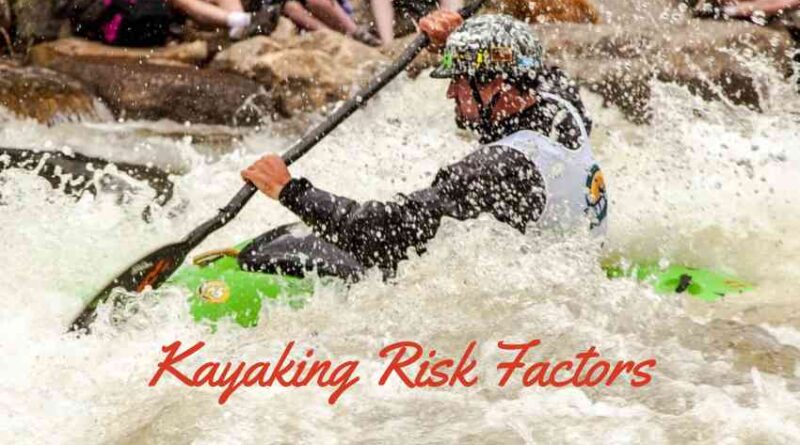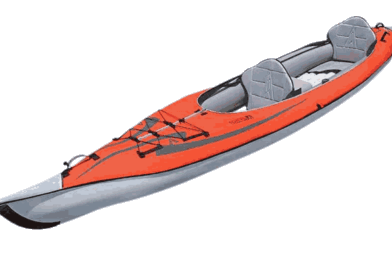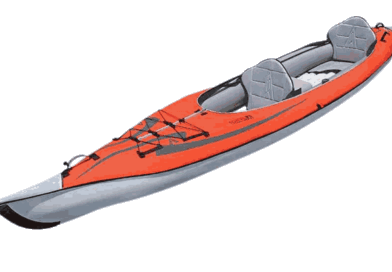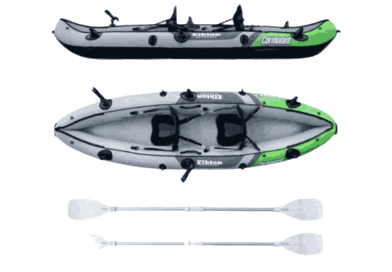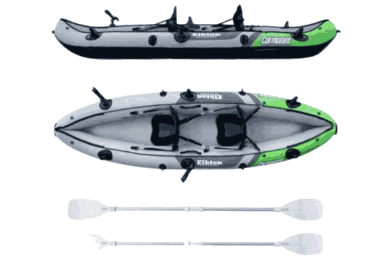Kayaking Risk Factors: All Your Questions Answered!
Kayaking: All Your Questions Answered!
Are you curious about the world of kayaking? Do you want to know if it’s a high-risk activity? Or maybe you’re wondering if it’s a good way to stay in shape? Well, you’re in luck! As an avid kayaker and adventure enthusiast, I’ve got all the answers you need.
In this article, we’ll take a deep dive into the world of kayaking and answer some of the most pressing questions. From the most common injuries to the leading cause of death among kayakers, we’ll cover it all. You’ll also discover the benefits of kayaking and how it can positively impact your physical health.
So, whether you’re a seasoned pro or a curious beginner, sit back, relax, and let’s explore the exciting world of kayaking together.
Table of Contents
Is kayaking high risk?
According to the American Canoe Association, kayaking has a low overall risk of injury, with only 0.3 injuries per 1000 paddler days. While the chance of death is relatively low, some common causes of death while kayaking include hypothermia, dehydration, drowning, and traumatic head injury.
It’s essential to take safety precautions, such as wearing a life jacket, avoiding hazardous weather conditions, and staying hydrated. With the right preparation and care, you can enjoy kayaking while minimizing the risks.
(Sources: American Canoe Association)
Now that we know kayaking has a low overall risk of injury, let’s take a closer look at the leading cause of death for kayakers.
What is the leading cause of death for kayakers?
Capsizing is the top cause of death for paddlers in small crafts like canoes, kayaks, and rafts. This happens when the boat overturns, and the paddler falls into the water, leading to drowning. According to the American Canoe Association, 70% of all kayaking fatalities are due to drowning, and 85% of those victims were not wearing a life jacket.
It is essential to wear a personal floatation device and take proper safety measures while kayaking to prevent accidents.
(Sources: American Canoe Association)
Now that we’ve discussed the leading cause of death for kayakers, let’s explore the most common injuries that can occur while paddling.
What are the most common injuries in kayaking?
As mentioned earlier, if you’re a paddler in a small craft like a canoe, kayak, or raft, the leading cause of death is capsizing. This means the craft flips over, and you end up in the water. Unfortunately, many paddlers don’t know how to swim or aren’t wearing life jackets, which can lead to drowning.
So, It’s important to always wear a life jacket and learn how to properly paddle to avoid capsizing.
Now that we’ve covered the importance of safety, let’s discuss the physical demands of kayaking.
How physically hard is kayaking?
- Upper body strength
- Good balance
- Low-impact exercise
- Can be relaxing or intense, depending on the activity level
- Requires some basic skills and training
- – Suitable for all ages and abilities.
What does kayaking do to your body?
Kayaking helps to improve cardiovascular fitness, which is important for a healthy heart and lungs. The main muscles used in kayaking are the back, arms, shoulders, and chest, which become stronger with each stroke of the paddle. Kayaking also helps to strengthen the torso and legs as it requires rotating the torso and applying pressure with the legs to power the kayak.
Benefits of Kayaking:
- Improved cardiovascular health
- Increased muscle strength in the back, arms, shoulders, and chest
- Increased torso and leg strength
- Low-impact exercise
- Stress relief
- Improved mental health
- Improved balance and coordination
So, if you’re looking for a fun and effective way to exercise, try kayaking!
With all the benefits that kayaking offers, you may be wondering if it can also help with weight loss.
Is kayaking a good way to lose weight?
Kayaking is a fun way to burn calories and lose weight! In just one hour of kayaking, you can burn 400+ calories. That’s like running for 30 minutes! If you kayak for three hours, you can burn up to 1200 calories. That’s more than jogging for an hour. It also has the added benefit of seeing nature.
So, if you’re looking for a new way to stay active and lose weight, kayaking might be perfect for you!
However, like any other physical activity, kayaking also has its potential drawbacks.
Are there any disadvantages of kayaking?
Kayaking and canoeing are fun sports, but they can cause some injuries. You might hurt your shoulder by using too much force to paddle, causing a strain or sprain. Over time, the repetitive motion can lead to wrist joint overuse injuries. Taking breaks and using proper techniques to prevent these injuries is important.
Disadvantages of Kayaking:
- Can cause shoulder and wrist injuries
- Can be tiring and require physical effort
- Can be dangerous in rough waters or bad weather
- Requires a lot of equipment and gear
Now that we’ve looked at some of the disadvantages of kayaking, let’s explore the likelihood of flipping over in a kayak.
How likely are you to flip over in a kayak?
Kayaks are generally safe and stable, but the risk of tipping depends on the type of kayak and the water conditions. Recreational kayaks are less likely to tip over in calm rivers, but whitewater kayaks in fast-moving rapids are more unstable.
Considering the stability of kayaks and the water conditions, the safety of seniors while kayaking can be evaluated.
Is kayaking safe for seniors?
Yes. Kayaking is a fun and safe sport for seniors. It’s a great way to stay active and enjoy the outdoors. Here are some reasons why kayaking is perfect for seniors:
- Low-impact exercise that is easy on the joints
- Helps improve balance and coordination
- Provides a sense of independence and adventure
- Can be done alone or with a group
- Plenty of opportunities to explore new places and wildlife
- Kayaks are designed for stability and safety
Remember, kayaking is a safe and enjoyable sport for seniors as long as they take the necessary precautions and follow safety guidelines. It’s important to wear a life jacket, stay within your skill level, and be aware of weather conditions and water currents.
With these precautions in mind, kayaking can be a great way for seniors to stay active and have fun.
Let’s talk about some basic kayaking skills that anyone can easily learn and master.
What is the most common kayak stroke?
The forward stroke is the most common and important stroke in kayaking. It’s used to move your kayak forward and is used frequently. Practice this stroke often to become comfortable and familiar with it. Here are some tips to perfect your forward stroke:
- Keep your upper body straight and rotate your torso
- Place the paddle blade in the water near your feet
- Pull the blade back towards your hip
- Repeat on the other side.
By mastering the forward stroke, you’ll be able to enjoy kayaking with ease and confidence.
Frequently Asked Questions
How can I ensure my safety while kayaking?
Ensure safety while kayaking by wearing a life jacket, checking weather and water conditions, staying alert, and avoiding alcohol or drugs.
What are some tips for preventing injuries while kayaking?
To prevent injuries while kayaking, warm up before paddling, use proper paddling techniques, and avoid overexertion or risky maneuvers.
Can kayaking be a good workout for people of all fitness levels?
Kayaking can be a good workout for people of all fitness levels, as it builds strength, endurance, and cardiovascular health.
What equipment do I need to go kayaking safely?
Essential equipment for safe kayaking includes a kayak, paddle, life jacket, whistle, and appropriate clothing and footwear.
Are there any precautions seniors should take when kayaking?
Seniors should take precautions when kayaking, such as choosing calm waters, paddling with a partner, and informing others of their plans.
What Can you do now?
Now that you know the benefits of kayaking, it’s time to get out on the water! If you’re in the market for a kayak, check out our review of the most demandable kayaks available. With the right equipment and safety precautions, kayaking can be a fun and safe way to stay active and explore the outdoors.
Now that we’ve covered some common questions about kayaking let’s dive deeper into the specific type of kayaking suited for rivers. If you’re interested in exploring the rushing currents and rapids of a river, then the next article is the perfect read for you.
Learn about the different types of river kayaks and which one might be best for your adventurous spirit. Click over to the next article and let’s continue our kayaking journey together.
